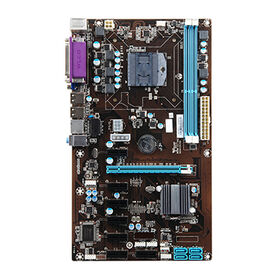
The ever-growing demand for high-performance graphics cards has driven innovations in manufacturing processes, particularly in the design and production of their printed circuit boards graphics card pcb The PCB, as the core component that connects all the elements of the graphics card, plays a crucial role in determining the performance, efficiency, and cost-effectiveness of the final product. With advancements in PCB technology, manufacturers can now produce graphics card PCBs more efficiently, reducing costs while maintaining the high performance demanded by modern applications. This article explores the cost-effective manufacturing benefits of modern graphics card PCBs.
1. Streamlined Design and Automation
Modern graphics card PCBs are designed with advanced CAD (Computer-Aided Design) tools that allow for more precise and efficient layouts. These tools enable designers to optimize the PCB layout, ensuring that the traces, components, and layers are arranged in the most cost-effective manner possible. By automating the design process, manufacturers can reduce labor costs and minimize human error, which ultimately leads to lower production costs.
Moreover, automated assembly lines are now commonly used in the manufacturing of graphics card PCBs. These lines use robotic arms and machines to place components with high precision, further reducing the labor costs associated with manual assembly. The efficiency of automated manufacturing not only reduces time and costs but also improves the consistency and quality of each board produced.
2. Advanced Materials for Cost Efficiency
In recent years, the materials used in PCB production have evolved significantly. New, high-performance materials such as advanced laminates, copper foils, and high-density interconnect (HDI) layers allow manufacturers to produce graphics card PCBs that are both cost-effective and capable of handling high-speed signals with minimal signal loss. These materials enable better thermal management and electrical performance while reducing the overall production cost compared to older, more expensive alternatives.
Additionally, modern materials often offer better durability and reliability, reducing the likelihood of defects and returns. This increases the overall yield and lifespan of the PCBs, which in turn leads to cost savings by minimizing the need for repairs or replacements during the production process.
3. Efficient Use of Space and Layering
Graphics card PCBs are often designed with multiple layers to accommodate the large number of components required. Modern manufacturing techniques allow for more efficient use of space within these multi-layer PCBs, which can reduce material costs and overall board size. By optimizing the number of layers and the use of smaller, more compact components, manufacturers can significantly reduce the overall cost per unit without compromising performance.
In addition, better routing and placement techniques enable more efficient power distribution and signal transmission, leading to improved performance and reduced need for extra layers or complex designs. This efficiency in design allows for cost savings in both material and manufacturing time.
4. Recycling and Sustainability
As environmental concerns continue to grow, manufacturers are increasingly adopting recycling practices to reduce waste and lower production costs. Modern graphics card PCB manufacturing processes often incorporate the use of recyclable materials, reducing the environmental impact and cost of raw materials. By reusing materials such as copper and aluminum, manufacturers can lower their reliance on expensive, virgin materials while contributing to sustainability efforts.
Moreover, sustainability in production processes not only helps reduce costs but also enhances the company’s reputation as an environmentally responsible business. This can lead to increased consumer trust and potentially greater market share.
5. Increased Yield and Reduced Waste
One of the primary benefits of modern graphics card PCB manufacturing is the increase in production yield. Thanks to improved quality control measures, automated testing, and more precise component placement, manufacturers can ensure that fewer boards are rejected or require rework. As a result, the cost per unit decreases because the overall waste and the need for re-manufacturing is minimized.
Furthermore, better production techniques, such as fine-pitch components and multi-layer HDI designs, ensure that each board is more densely packed, which reduces waste materials and optimizes the use of available space on the PCB.
Conclusion
The cost-effective manufacturing benefits of modern graphics card PCBs are clear. Through streamlined design and automation, the use of advanced materials, efficient space utilization, recycling practices, and increased yield, manufacturers can produce high-performance graphics card PCBs at a reduced cost. These advancements in technology not only help manufacturers stay competitive in a rapidly evolving market but also ensure that consumers receive high-quality, affordable products. As the demand for powerful graphics cards continues to grow, these manufacturing improvements will play a vital role in shaping the future of the industry.
CATEGORIES:
Tags:
No Responses